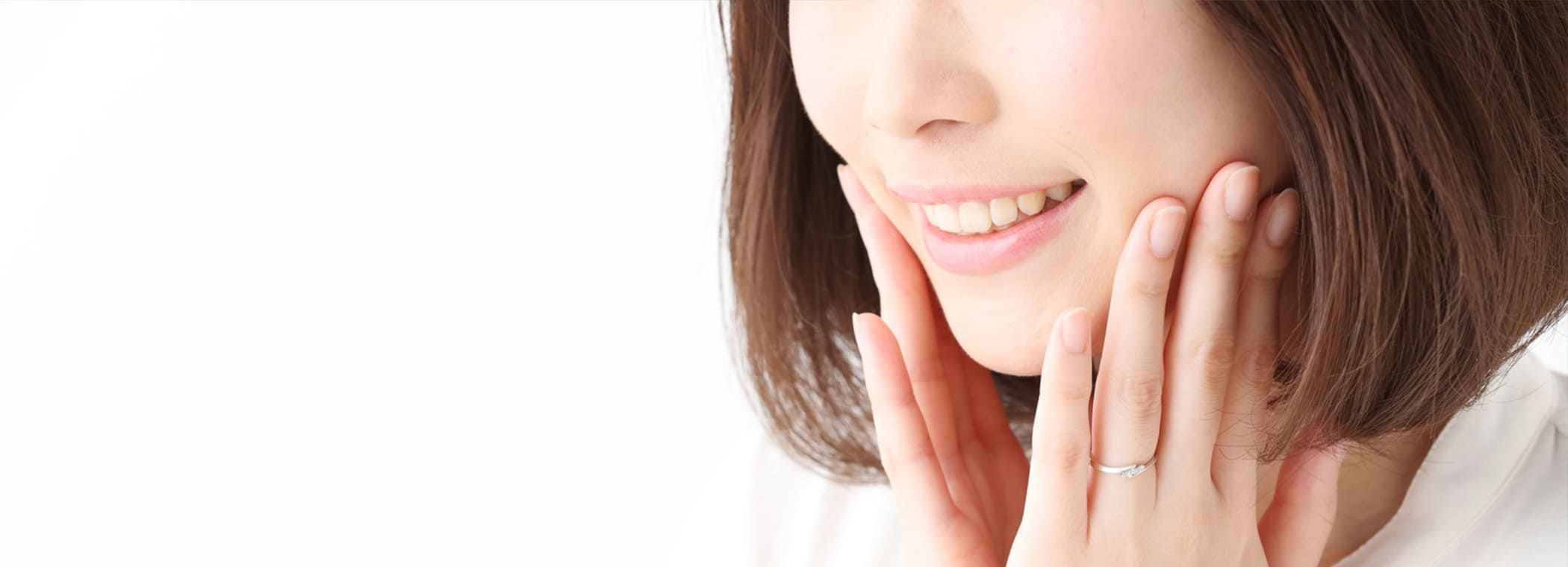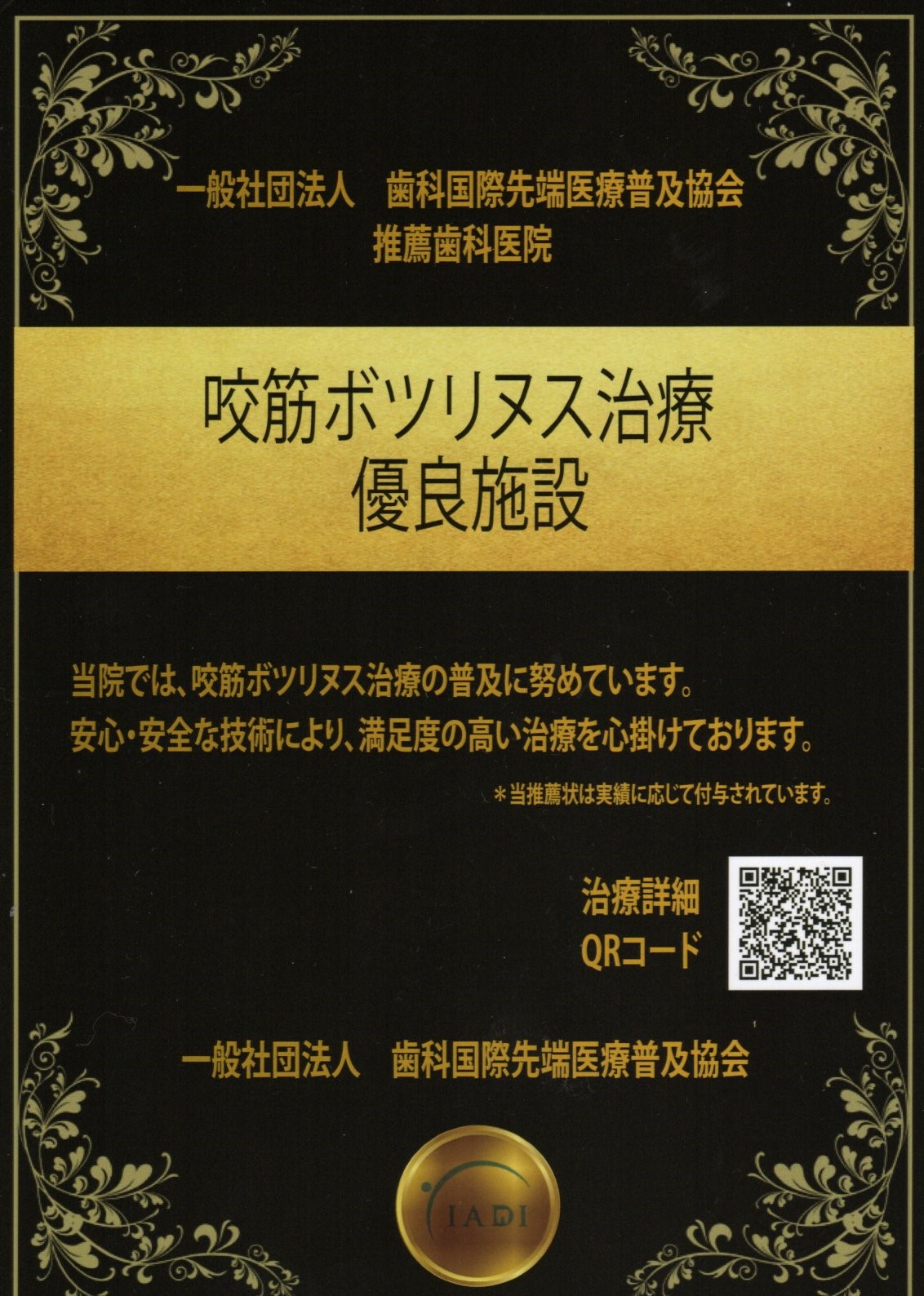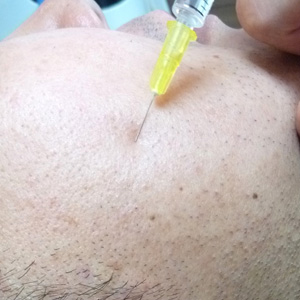新谷メソッド・ボトックス治療 Shintani TMJ

03
歯ぎしり・食いしばりに
新谷式ボトックス治療

ボトックスは美容外科でしわを改善するために使われることが多いですが、実は、歯ぎしりや食いしばりに効果があります。
新谷メソッドでは多くの患者さんを、歯ぎしり、食いしばり、そして、これに起因する顎関節症を治しています。
欧米では古くからこの治療が行われてきましたが、新谷メソッドは日本人に合う形で提供しております。安全で効果期待できる治療です。
ボトックス治療とは

ボツリヌス毒素(ボトックス)は、神経末端の組織の作用を抑制し、神経から筋肉への命令伝達を阻害することで 異常な筋肉運動を和らげたり、止めたりすることによって効果を発揮します。
美容外科のシワとりにも使われていることはよく知られています。
当クリニックでは主に咬筋へのボトックス注射で、歯ぎしり。食いしばり、そしてこれに筋する顎関節症の治療を行っております。
歯ぎしりには、睡眠を妨げ、家族や周囲の人たちに迷惑をかけること有ります。また本人にとっては夜間の強い噛み合わせのために、朝起きた時に顎や側頭部に強い頭痛や、肩こりの原因になることもあり、さらに歯の摩擦や、被せものが割れたりすることにもつながります。
期待できる効果
歯ぎしりや食いしばりが軽快~消失する
咬筋や側頭筋への注射で、歯ぎしりや食いしばりが改善します。
歯の磨滅が抑制される
歯ぎしりによって歯がすり減るのを防止します。
えら張りが改善され、小顔効果
主な目的ではありませんが、小顔効果もあります。
歯ぎしりに対するボトックス治療の実際

ボトックスを咬筋(約3~5ヵ所)に分けて筋肉注射します。
注射後7日から10日で効果が現れ約4~6か月まで歯ぎしりや食いしばりが軽減します。程度が強い場合には、内側翼突筋や外側翼突筋にも注射を打つことが必要になる場合もあります。
投与後4~6ヵ月後には薬物の効果がなくなります。
これに伴って、再度症状が現れる場合には再度注射が必要になることがありますが、1回の注射によって長期にわたり症状が出なくなる人も少なくありません。
新谷 悟の「お口の博士」
Vol.08
歯ぎしり・食いしばりについて
Vol.09
顎関節症について
ボトックスの効果に関する医学的根拠
ボトックスの顎関節症、歯ぎしり、くいしばりに対する効果に関する医学的根拠は次の通りです。
文献
- J Maxillofac Oral Surg. 2015 Jun;14(2):171-5. doi:
10.1007/s12663-014-0641-9. Epub 2014
Sep 4.
Botulinum toxin in the treatment of muscle specific Oro-facial pain: a literature review.
Sunil Dutt C1, Ramnani P1, Thakur D1, Pandit M1.
Author information
Abstract
Facial pain associated with temporomandibular joint (TMJ) and surrounding structures has been a challenge to clinicians as far as diagnosis and management is concerned. Complexity of anatomical structures within a small area, function of teeth and surrounding periodontal ligament, action of muscles, pathologies, lack of diagnostic investigations, all these complicate specific diagnosis of TMJ disorders. Various classifications have been designed and studied to help diagnose and treat TMJ related disorders, of which the simplest one is pain from TMJ proper and surrounding muscles. Many treatment modalities to treat pain arising from muscles around TMJ like splints, mouth restriction exercises, injection of sclerosing agents etc. have been used with various degrees of success. Botulinum toxin has been shown to be effective in the treatment of oro-facial pain due to muscular disorders and the same is discussed in detail in this review literature.
文献
- Int J Oral Maxillofac Surg. 2013 Jun;42(6):759-64. doi:
10.1016/j.ijom.2013.02.009.
Epub 2013 Mar 26.
Botulinum toxin injection for management of temporomandibular joint clicking.
Emara AS1, Faramawey MI, Hassaan MA, Hakam MM.
Author information
Abstract
The aim of the present study was to investigate the effect of botulinum toxin type A (BTX-A) injection in the lateral pterygoid (LP) muscle on temporomandibular joint (TMJ) clicking. The study enrolled seven patients with a total of 11 joints; all patients were stage I or II of Wilke’s staging for internal derangement. BTX-A was injected in the ipsilateral LP muscle with electromyogram (EMG) guidance and the subjects were assessed for 4 months. Maximum inter-incisal opening, range of lateral movement, and the presence of a click were recorded throughout the follow-up period, and magnetic resonance imaging (MRI) was ordered at the end of the 4 months. The results showed that the decrease in inter-incisal opening and side to side movement immediately postoperative was statistically significant, while the difference by the end of the follow-up period was insignificant. MRI showed a marked improvement in disc position postoperatively. It may be concluded that BTX injection in the LP muscle leads to the disappearance of joint clicking clinically and a significant improvement in disc position as shown on MRI.
Copyright © 2013 International Association of Oral and Maxillofacial Surgeons. Published by Elsevier Ltd. All rights reserved.
文献
- Rev Stomatol Chir Maxillofac. 2012 Feb;113(1):27-31. doi:
10.1016/j.stomax.2011.12.003. Epub 2012
Jan 10.
[Botulinum toxin A: analgesic treatment for temporomandibular joint disorders].
[Article in French]
Denglehem C1, Maes JM, Raoul G, Ferri J.
Author information
Abstract
INTRODUCTION:
Pain, along with clicking, sub-luxation, and blocking, is one of the main symptoms for patients presenting with temporomandibular joint disorders. We assessed the effectiveness of botulinum toxin A (BOTOX(®), Allergan) as analgesic treatment for temporomandibular joint disorders.
PATIENTS AND METHOD:
Twenty-six patients with chronic pain linked to temporomandibular joint disorders were prospectively assessed. Botulinum toxin A was injected in masseter and temporalis muscles. Follow-up parameters, at one and three months, were: measuring mouth opening and diduction, muscle tenderness and pain using a visual analogue scale.
RESULTS:
There was a significant (P<0.0001) decrease of pain, an increased mouth opening, and diduction at three months. Seventy percent of the patients felt less muscle tenderness. The patient felt his psychological state had improved and so did his family.
DISCUSSION:
Botulinum toxin A significantly decreases pain and improves movements of patients presenting with temporomandibular joint disorders. The effects are prolonged three months after the injection.
Copyright © 2012 Elsevier Masson SAS. All rights reserved.
文献
- Dent Update. 2006 Apr;33(3):165-8.
A review of the current uses of Botox for dentally-related procedures.
Bhogal PS1, Hutton A, Monaghan A.
Author information
Abstract
Botox is the most widely used abbreviation for botulinum toxin type A (BtA). This drug has received wide coverage in the press and media for its cosmetic advantages, especially in the facial region. The clinician may be aware of the many courses becoming available and aimed at dentists to start using it in the cosmetic context. This paper intends to provide a basic understanding of the many functional uses of the drug in the orofacial region that may be relevant to everyday practice.
CLINICAL RELEVANCE:
Awareness of the current medical, as opposed to purely cosmetic, uses of botulinum toxin in the orofacial region is desirable and this paper should inform clinicians and their patients with respect to this increasingly popular drug.
陳旧性関節症に対するボトックス治療の論文では、77%の患者さんに効果があり、ストレスに関係する精神的な(心因性の)歯ぎしりにおいて特に効果があったとの報告がなされています。
文献
- Int J Oral Maxillofac Surg. 2017 Mar;46(3):322-327.
Clinical outcomes of Botox injections for chronic temporomandibular disorders: do we understand how Botox works on muscle, pain, and the brain?
Connelly ST1, Myung J2, Gupta R2, Tartaglia GM3, Gizdulich A3, Yang J4, Silva R2
口呼吸と鼻呼吸Mouth Breathing and Nose Breathing
鼻腔(びこう)には、「外部から入り込む異物や細菌を防ぎ排出する」「吸う空気を温める」「乾燥した息に湿り気を与える」といった働きがあります。しかし、口呼吸では、吸った空気が直接肺に入るため、風邪をひきやすくなる、空気中に含まれるホコリやダニなどのアレルゲン物質を取り除くことができずアレルギー症状が出やすくなるなど、さまざまな病気や症状の原因になります。
口呼吸が原因で起こる病気・症状
- いびき
- のどの疾患
- むし歯
- 頭痛
- 慢性疲労
- 鼻汁過多
- 味覚障害
- ドライマウス
- 口内炎
- 風邪を引きやすい
- 歯ぎしり
- アレルギー症状が出やすい
いびきと口呼吸
いびきは、口を開けて寝る(口呼吸)時に軟口蓋や舌根(舌の奥の方)が咽頭(のど)の方に落ち込み、上気道が狭くなり、出入りする空気が狭くなった上気道を振動させることが大きな原因です。様々な病気や肥満、その他一時的な疲れやアルコールの影響も関係します。
いびきの状態がひどくなり、軟口蓋などが気道を完全に塞ぐために呼吸が途切れる状態が、睡眠時無呼吸症候群で、睡眠レベルが浅くなり、熟睡ができないため、昼間眠たくなるばかりではなく、血圧や健康状態に非常に悪い影響を及ぼすことになります。
通常、鼻呼吸を行っている人は睡眠時に、舌先が前歯部に吸いつき、気道が広く保たれています。気道を確保するためには、口唇を閉ざす必要があります。いびきをかく人は口呼吸習慣があるため、睡眠時に前歯部に吸い付いていた舌が離れて、舌根がのどに落ち込む結果、いびきやさらに進んで睡眠時無呼吸症候群を合併します。
歯ぎしり
上下の歯が噛み合った状態で大きな力(通常時の8倍と言われています)で顎をずらす時に、歯と歯がきしんで音が出る状態をいいます。
歯ぎしりと口呼吸
「口を開けて寝ている人に歯ぎしりはないんじゃないの?」と思われている方へ
熟睡・安眠
リラックスして眠っている時は、上下顎の歯と歯の間が1㎜ほど開いた状態で、口唇を閉ざして鼻呼吸をしているのが理想です。これに対して口呼吸をしていると急に歯を食い縛たり、歯ぎしりを始めることがわかっています。
これは、咀嚼筋・表情筋・舌筋群など、顔と口・顎を構成する筋肉群が元来すべて内臓の筋肉と同じ由来であり、起きている時の交感神経の過緊張(ストレス)をそのまま睡眠に持ち込んで、これらの筋肉が痙縮して、くい縛り運動、歯ぎしりを反復性に繰り返すことになります。
硬い枕で横向き寝をすると必ず下顎の歯の一部が、上顎の一部の歯に斜めに当たるため、なお、不均衡な片側のみのくい縛りが発生し、歯ぎしりにつながります。
横向き寝の口呼吸では必ず顎が咀嚼(ものを食べる)時に近い運動をし、歯ぎしりの原因になります。
歯ぎしりを防ぐには、腹式呼吸ではなく横隔膜で十分に呼吸ができるように鼻呼吸を行い、副交感神経優位になるようにゆったりと、上向き寝で、やわらかい枕で頭の位置が1㎝位ゆったりと頭を沈めます。そのようにすると、上下顎の安静位(歯と歯の間が1㎜位開く状態)が保たれ、鼻腔から気管に至る気道がほぼ一直線に保たれ、最も安定した呼吸の下に安眠することができます。
通常、鼻呼吸を行っている人は睡眠時に、舌先が前歯部に吸いつき、気道が広く保たれています。気道を確保するためには、口唇を閉ざす必要があります。歯ぎしりをする人は口呼吸習慣があるため、睡眠時に前歯部に吸い付いていた舌が離れて、舌根がのどに落ち込む結果、いびきやさらに進んで睡眠時無呼吸症候群を合併します。
ボトックス治療費用Treatment Cost
| 治療料金(税込表示) | |
|---|---|
| ボトックス | ¥33,000~¥77,000 |
主なリスク・副作用
- 血中アルブミンを使用する準血液製剤になるためクロイツフェルト ヤコブ病に罹患する可能性がある。
- 注射部のかゆみ4% 注射部の疼痛4.4% 筋痛2.6% 発赤1.7%。
- 妊娠、授乳における影響があるので、注射後3ヶ月は避ける。
- アミノグリコスコート系抗生物質、精神安定剤、筋弛緩薬を服用中の患者さんは効果が強く出ることがあるので、歯科医師に通達する。
- 喘息、重度の筋力低下、緑内障がある方はそれらの病状を悪化させる可能性がある。
